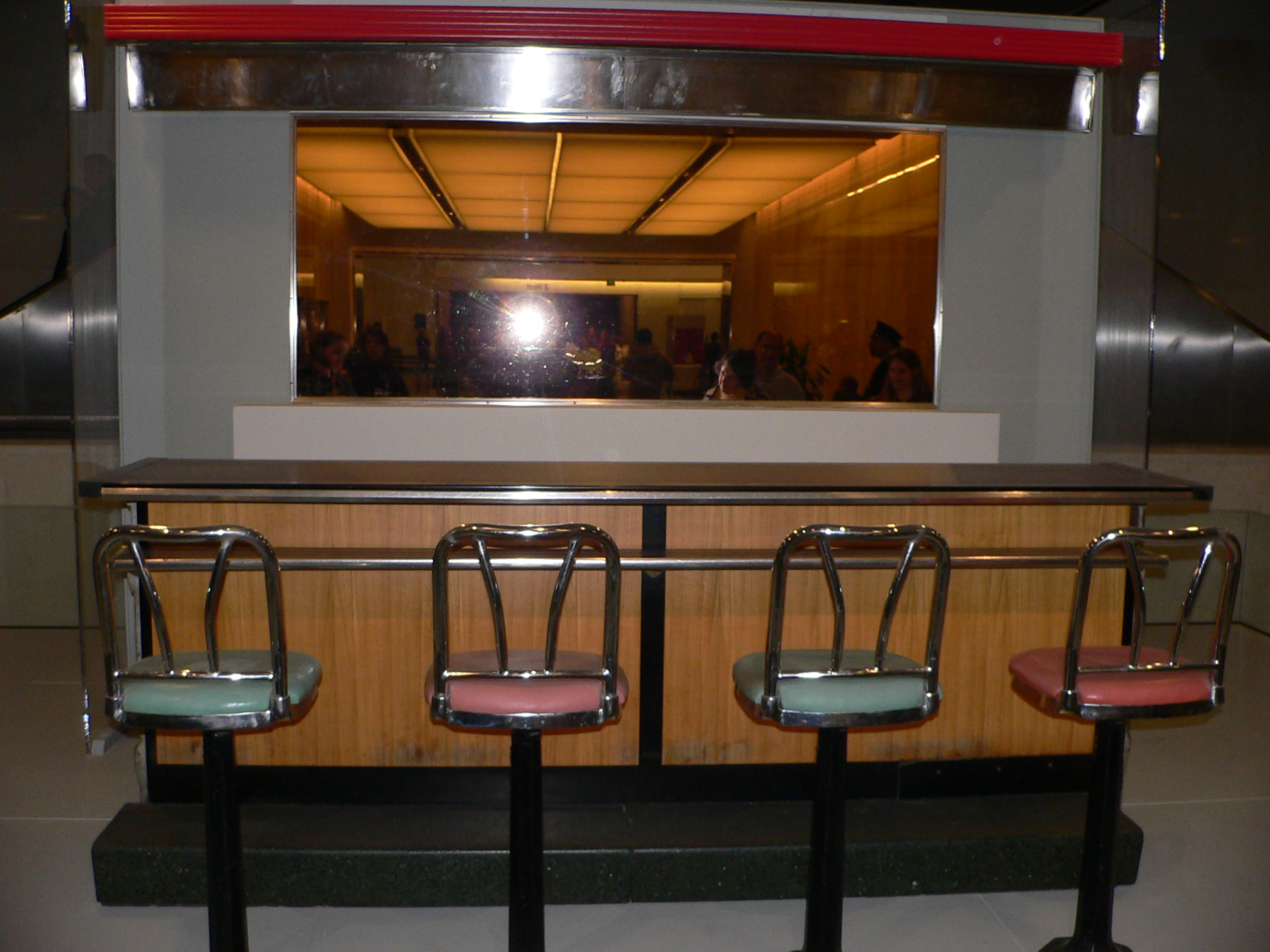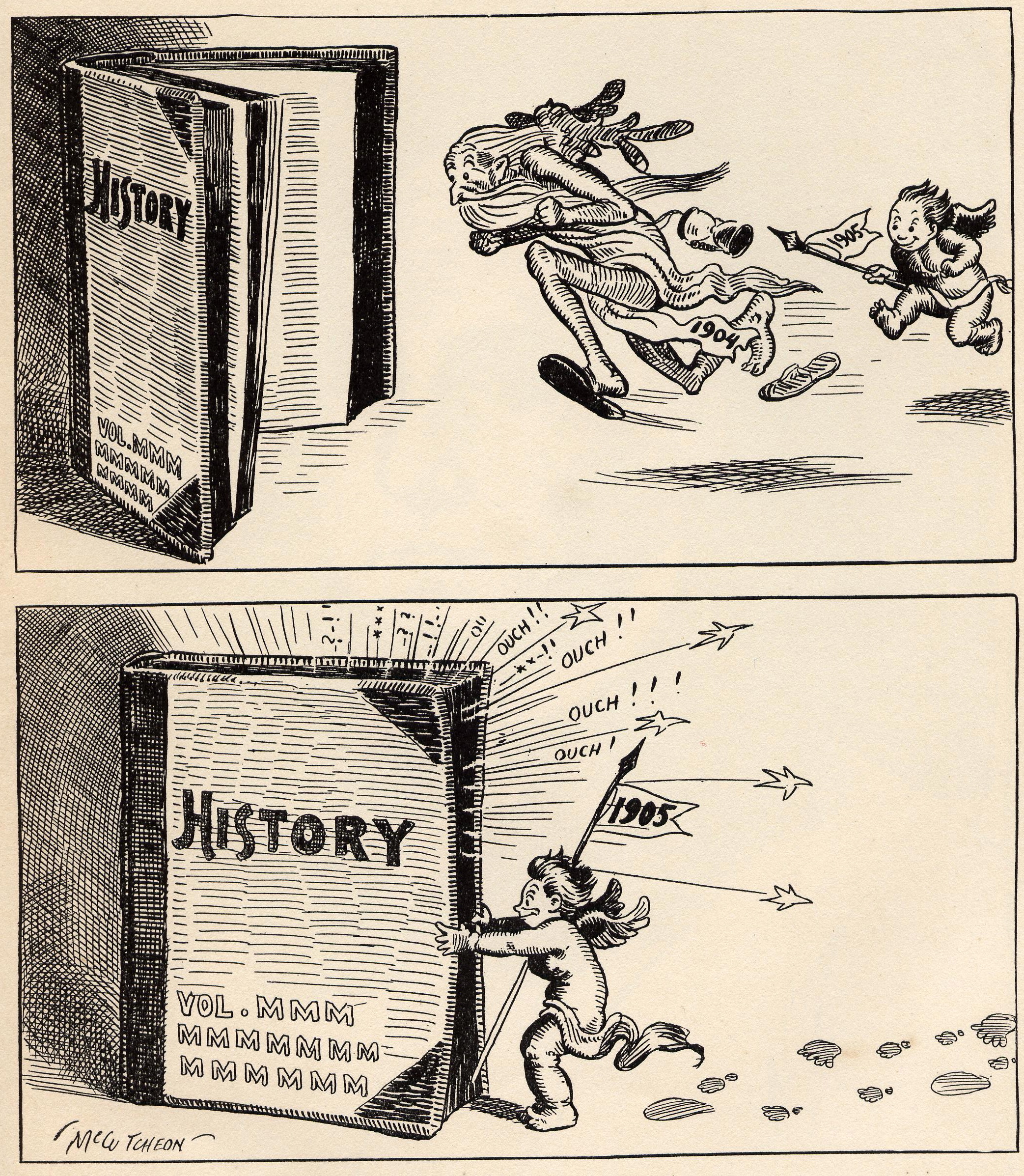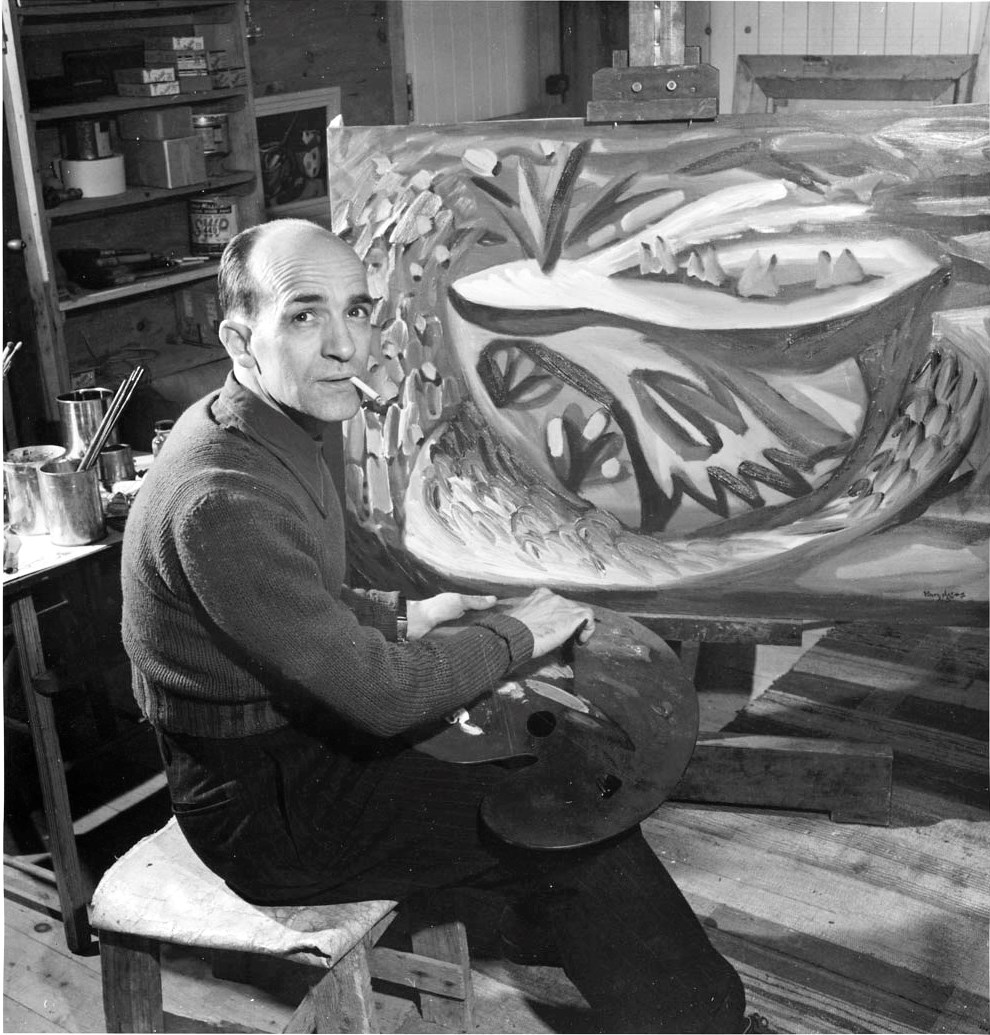|
Paul-Émile Borduas
Paul-Émile Borduas (November 1, 1905 – February 22, 1960) was a Québécois artist known for his abstract paintings. He was the leader of the avant-garde Automatiste movement and the chief author of the Refus Global manifesto of 1948. Borduas had a profound impact on the development of the arts and of thought, both in the province of Quebec and in Canada. Biography Borduas was born on November the first, 1905, in Saint-Hilaire, Quebec (a small village 50 kilometres from Montréal). He was the fourth child of Magloire Borduas and Éva Perrault. As a child, he engaged in ''bricolage'' - his first known artistic activity. He received five years of formal elementary school education, (which ended at the age of twelve) and some private lessons from a village resident. In his teens, Borduas met church painter and decorator Ozias Leduc, and Leduc agreed to take the young artist as an apprentice. Leduc provided Borduas with basic artistic training, teaching him how to rest ... [...More Info...] [...Related Items...] OR: [Wikipedia] [Google] [Baidu] |
Ateliers D'Art Sacré
The Ateliers d'Art Sacré (Studios of Sacred Art, 1919-1947) was a collective of artists based in Paris, France in the first half of the 20th century. It aimed to create religious art that was both modern and accessible to the general public. For nearly thirty years, this movement brought together a large number of artists dedicated to producing art in the service of the Catholic faith. Foundation The Ateliers d'Art Sacré were founded on 15 November 1919 after World War I (1914-18) by Maurice Denis (1870–1943) and Georges Desvallières (1861–1950) as part of a broad movement in Europe to reconcile the church with modern civilization. Their aim was to train artists and crafts people in the practice of Christian art and to provide tasteful religious works of traditional and modern style to churches, particularly those that had been devastated by the war. Denis stated that he was against academic art because it sacrificed emotion to convention and artifice, and was also a ... [...More Info...] [...Related Items...] OR: [Wikipedia] [Google] [Baidu] |
Quiet Revolution
The Quiet Revolution () was a period of socio-political and socio-cultural transformation in French Canada, particularly in Quebec, following the 1960 Quebec general election. This period was marked by the secularization of the government, the establishment of a state-administered welfare state known as the , a shift in political alignment toward federalist and sovereigntist (or separatist) factions (each faction influenced by Quebec nationalism), and the eventual election of a pro-sovereignty provincial government in the 1976 election. While the Quiet Revolution is often associated with the efforts of the Liberal Party of Quebec's government led by (elected in 1960) and, to some extent, (elected in 1970 after Daniel Johnson of the in 1966), its profound impact has influenced the policies of most provincial governments since the early 1960s. A primary change was an effort by the provincial government to assume greater control over healthcare and education, both of whic ... [...More Info...] [...Related Items...] OR: [Wikipedia] [Google] [Baidu] |
1960 Deaths
It is also known as the "Year of Africa" because of major events—particularly the independence of seventeen African nations—that focused global attention on the continent and intensified feelings of Pan-Africanism. Events January * January 1 – Cameroon becomes independent from France. * January 9–January 11, 11 – Aswan Dam construction begins in Egypt. * January 10 – Prime Minister of the United Kingdom, British Prime Minister Harold Macmillan makes the Wind of Change (speech), "Wind of Change" speech for the first time, to little publicity, in Accra, Gold Coast (British colony), Gold Coast (modern-day Ghana). * January 19 – A revised version of the Treaty of Mutual Cooperation and Security between the United States and Japan ("U.S.-Japan Security Treaty" or "''Anpo (jōyaku)''"), which allows U.S. troops to be based on Japanese soil, is signed in Washington, D.C. by Prime Minister Nobusuke Kishi and President Dwight D. Eisenhower. The new treaty is opposed by t ... [...More Info...] [...Related Items...] OR: [Wikipedia] [Google] [Baidu] |
1905 Births
As the second year of the massive Russo-Japanese War begins, more than 100,000 die in the largest world battles of that era, and the war chaos leads to the 1905 Russian Revolution against Nicholas II of Russia (Dmitri Shostakovich, Shostakovich's Symphony No. 11 (Shostakovich), 11th Symphony is subtitled ''The Year 1905'' to commemorate this) and the start of Revolution in the Kingdom of Poland (1905–07), Revolution in the Kingdom of Poland. Canada and the U.S. expand west, with the Alberta and Saskatchewan provinces and the founding of Las Vegas. 1905 is also the year in which Albert Einstein, at this time resident in Bern, publishes his four Annus Mirabilis papers, ''Annus Mirabilis'' papers in ''Annalen der Physik'' (Leipzig) (March 18, May 11, June 30 and September 27), laying the foundations for more than a century's study of theoretical physics. Events January * January 1 – In a major defeat in the Russo-Japanese War, Russian General Anatoly Stessel su ... [...More Info...] [...Related Items...] OR: [Wikipedia] [Google] [Baidu] |
National Gallery Of Canada
The National Gallery of Canada (), located in the capital city of Ottawa, Ontario, is Canada's National museums of Canada, national art museum. The museum's building takes up , with of space used for exhibiting art. It is one of the List of largest art museums, largest art museums in North America by exhibition space. The institution was established in 1880 at the Second Supreme Court of Canada building, and moved to the Victoria Memorial Museum building in 1911. In 1913, the Government of Canada passed the ''National Gallery Act'', formally outlining the institution's mandate as a national art museum. The Gallery was moved to the Lorne Building in 1960. In 1988, the Gallery was relocated to a new complex designed by Israeli architect Moshe Safdie. The glass and granite building is on Sussex Drive, with a notable view of Canada's Parliament Buildings on Parliament Hill. [...More Info...] [...Related Items...] OR: [Wikipedia] [Google] [Baidu] |
National Film Board Of Canada
The National Film Board of Canada (NFB; ) is a Canadian public film and digital media producer and distributor. An agency of the Government of Canada, the NFB produces and distributes documentary films, animation, web documentaries, and alternative dramas. In total, the NFB has produced over 43,000 productions since its inception, which have won over 5,000 awards. The NFB reports to the Parliament of Canada through the Minister of Canadian Heritage. It has bilingual production programs and branches in English and French, including multicultural-related documentaries. History Canadian Government Motion Picture Bureau The Canadian Government Motion Picture Bureau, Exhibits and Publicity Bureau was founded on 19 September 1918, and was reorganized into the Canadian Government Motion Picture Bureau in 1923. The organization's budget stagnated and declined during the Great Depression. Frank Badgley, who served as the bureau's director from 1927 to 1941, stated that the bureau ne ... [...More Info...] [...Related Items...] OR: [Wikipedia] [Google] [Baidu] |
Prix Condorcet
Prix Condorcet was instituted in 1993, by the Mouvement laïque québécois to honour a public personality who had worked for the defense of secularity and freedom of thought. The name honours the Marquis de Condorcet, a philosopher of the Age of Enlightenment and one of the writers of the Declaration of the Rights of Man and of the Citizen. * 1993: Micheline Trudel, voluntary. * 1994: Henry Morgentaler, defender of the right to abortion in Canada. * 1995: Centrale des syndicats du Québec, trade union of teachers. * 1996: Louise Laurin, founder of the Coalition for the deconfessionnalisation of the school system. * 1997: Institut canadien de Montréal, liberal and anticlerical organization (1844-1880). * 1998: All signatories of Refus Global. * 1999: Duplessis Orphans Association. * 2000: Jacques Hébert, senator and humanist of secularity. * 2001: Pierre Bourgault, founder of Rassemblement pour l'Indépendance Nationale and free-thinker. * 2002: Jacques Godbout and Jacque ... [...More Info...] [...Related Items...] OR: [Wikipedia] [Google] [Baidu] |
Prix Paul-Émile-Borduas
The Prix Paul-Émile-Borduas is an award by the Government of Quebec that is part of the Prix du Québec, given to individuals who are artists or craftsman in the fields of visual arts, of the trades of art, architecture and the design. It is named in honour of Paul-Émile Borduas Paul-Émile Borduas (November 1, 1905 – February 22, 1960) was a Québécois artist known for his abstract paintings. He was the leader of the avant-garde Automatiste movement and the chief author of the Refus Global manifesto of 1948. B .... The disciplines recognized for this prize in the field of visual arts are painting, sculpture, print, drawing, illustration, photography, textile arts, video art and multidisciplinary arts. The disciplines recognized in the field of the trades of art are those which refer to the transformation wood, leather, textiles, metals, silicates or of any other matter. Winners References Canadian visual arts awards Paul-Emile-Borduas {{art-award-stu ... [...More Info...] [...Related Items...] OR: [Wikipedia] [Google] [Baidu] |
Prix Du Québec
The Prix du Québec () are awards given by the Government of Quebec to individuals for cultural and scientific achievements. Founded in 1977, the government annually awards seven awards in the cultural field and six in the scientific field. Cultural awards * Prix Albert-Tessier, for cinema *Prix Athanase-David, for literature * Prix Denise-Pelletier, for acting * Prix Ernest-Cormier, for architecture and design * Prix Georges-Émile-Lapalme, for the French language * Prix Gérard-Morisset, for a career in archives, museology and popular culture * Prix Guy-Mauffette, for radio and television arts * Prix Paul-Émile-Borduas, for visual arts and applied arts Scientific awards * Prix Armand-Frappier, for scientific research and education * Prix Léon-Gérin, for human and social sciences * Prix Lionel-Boulet, for innovation leading to economic growth * Prix Marie-Andrée-Bertrand, for innovation in social sciences leading to collective well-being *Prix Marie-Victorin, for natural s ... [...More Info...] [...Related Items...] OR: [Wikipedia] [Google] [Baidu] |
Heffel Gallery
Heffel Fine Art Auction House (or Heffel) is a division of Heffel Gallery Limited. Heffel maintains offices in Vancouver, Calgary, Toronto, Ottawa and Montreal. History In 1978 art collector Kenneth Grant Heffel (1935–1987) established Kenneth G. Heffel Fine Art Inc. in the former Royal Bank of Canada building on South Granville Street in Vancouver. In 1980, the former industrialist purchased the Fannin Hall Collection of 145 works by Canada’s Group of Seven artists and their contemporaries for $6 million. In February, an exhibition of this collection established his reputation as a dealer of important Canadian art. On his death in 1987, his sons David Heffel (born 1962) and Robert Heffel (born 1964), both educated in art history, took over the business. Renamed Heffel Gallery Limited, the company continued to show work by well-known Canadian artists such as Alex Colville, Guido Molinari, Emily Carr and Lawren Harris. In 1995, the two brothers established the division of ... [...More Info...] [...Related Items...] OR: [Wikipedia] [Google] [Baidu] |
CBC News
CBC News is the division of the Canadian Broadcasting Corporation responsible for the news gathering and production of news programs on the corporation's English-language operations, namely CBC Television, CBC Radio, CBC News Network, and CBC.ca. Founded in 1941 by the public broadcaster, CBC News is the largest news broadcaster in Canada and has local, regional, and national broadcasts and stations. It frequently collaborates with its organizationally separate French-language counterpart, Radio-Canada Info. History The first CBC newscast was a bilingual radio report on November 2, 1936. The CBC News Service was inaugurated during World War II on January 1, 1941, when Dan McArthur, chief news editor, had Wells Ritchie prepare for the announcer Charles Jennings a national report at 8:00 pm. Previously, CBC relied on The Canadian Press to provide it with wire copy for its news bulletins. Readers who followed Jennings were Lorne Greene, Frank Herbert and Earl Cameron. '' ... [...More Info...] [...Related Items...] OR: [Wikipedia] [Google] [Baidu] |






